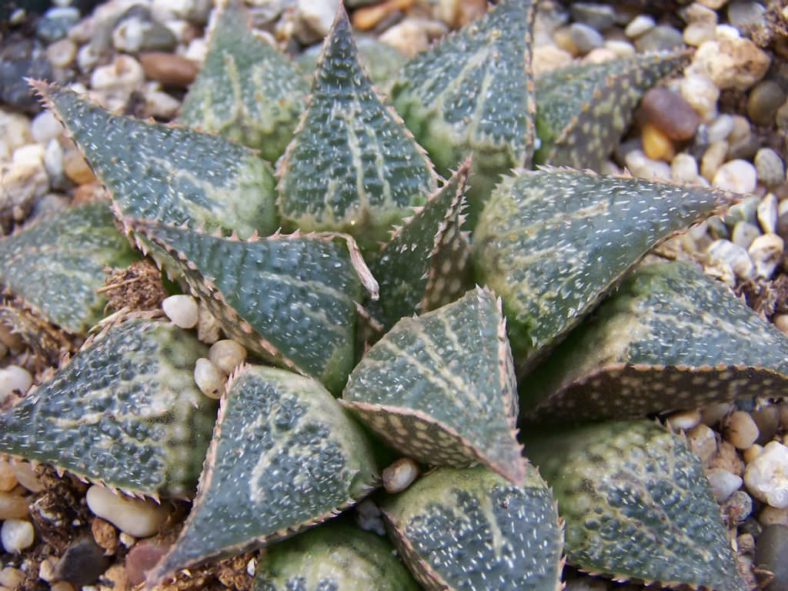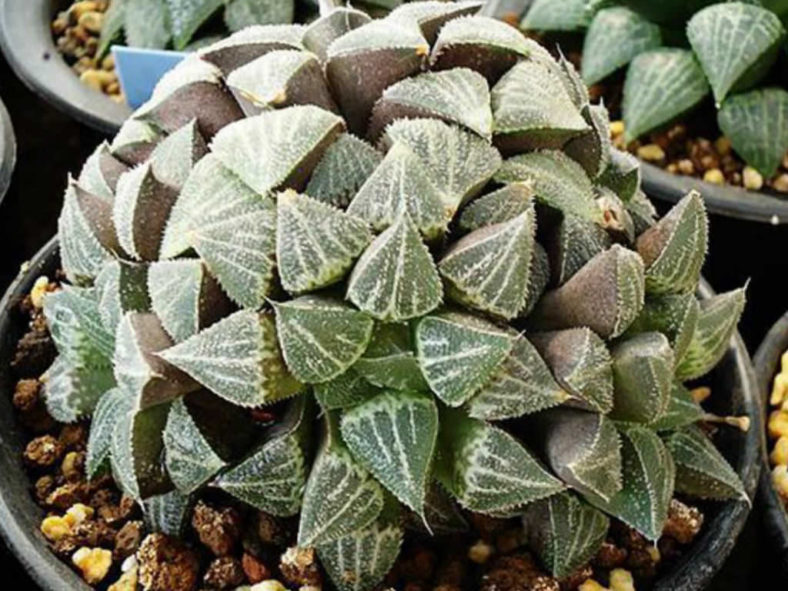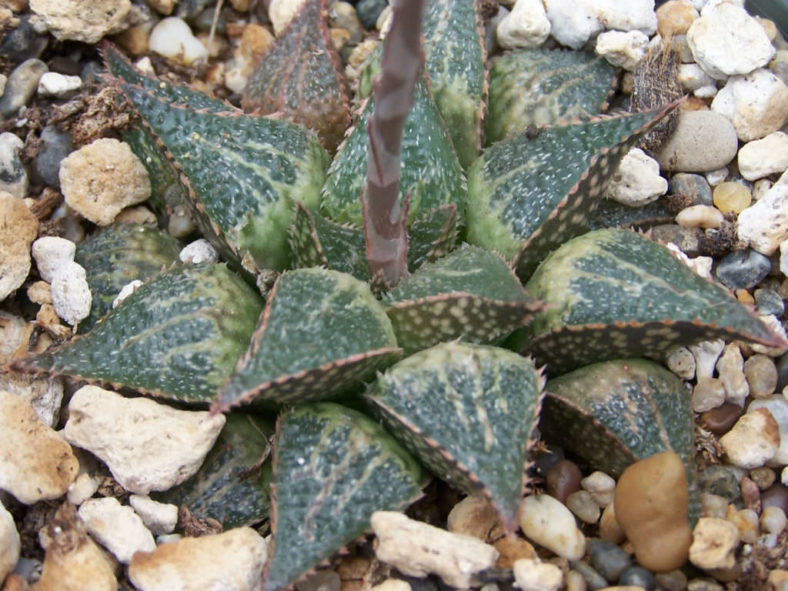Scientific Name
Haworthia emelyae var. major (G.G.Sm.) M.B.Bayer
Synonym(s)
Haworthia magnifica var. major, Haworthia maraisii var. major, Haworthia multifolia var. major, Haworthia schuldtiana var. major, Haworthia wimii
Scientific Classification
Family: Asphodelaceae
Subfamily: Asphodeloideae
Tribe: Aloeae
Genus: Haworthia
Etymology
The varietal epithet "major" (pronounced "MAY-jor") means "greater, larger" and refers to the rosettes of this variety, which are larger than those of Haworthia emelyae var. emelyae.
Origin
Haworthia emelyae var. major is native to South Africa. It occurs on the Karroo side of Garcia Pass among rocks and in rock crevices on a northern aspect.
Description
Haworthia emelyae var. major is a small succulent that forms a stemless, usually solitary rosette of thick, fleshy leaves with numerous concolorous tubercles tipped with white teeth. The rosette can reach a diameter of 3.4 inches (8.5 cm). The leaves are dark green and translucent with 3 to 7 greenish-white lines. They are obovate, recurved, somewhat convex at the upper surface, and can measure up to 1.6 inches (4 cm) in length and up to 0.6 inches (1.5 cm) in width. The keels and margins have slender, whitish teeth.
From spring to fall, Haworthia emelyae var. major produces white flowers that are suffused green and have brownish-green lines. The flowers appear spirally arranged in a raceme that can reach a length of up to 3.4 inches (8.5 cm). The peduncle is simple, stout, and can grow up to 12 inches (30 cm) long, including the raceme.

Hardiness
USDA hardiness zones 10a to 11b: from 30°F (-1.1°C) to 50°F (10°C).
How to Grow and Care
These succulents are not considered difficult to grow as houseplants. If you can keep a pot of Aloe alive on a windowsill, chances are you can do the same with a dish of Haworthia. As with all succulents, the most common issue is overwatering. They should never be allowed to sit in water under any circumstances. At the same time, these little decorative plants can be grown in interesting containers such as teacups and even miniature baby shoes. If you're given a Haworthia in such a container, ensure the container has adequate drainage.
Haworthias are small, usually between 3 and 5 inches (7.5 cm and 12.5 cm) in height, and relatively slow-growing. Therefore, they are often grown in small clusters in wide, shallow dishes. Over time, clusters will naturally enlarge as the mother plant sends off small plantlets. When the cluster has outgrown its container, repot into a new wide and shallow container with fresh potting soil in the spring or early summer. This is also the time to take offsets for propagation.
See more at How to Grow and Care for Haworthia.
Links
- Back to genus Haworthia
- Succupedia: Browse succulents by Scientific Name, Common Name, Genus, Family, USDA Hardiness Zone, Origin, or cacti by Genus
Photo Gallery
Click on a photo to see a larger version.

